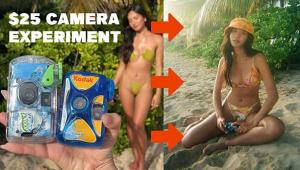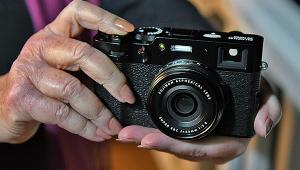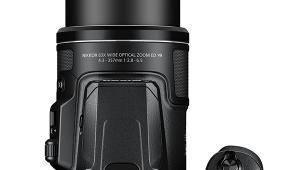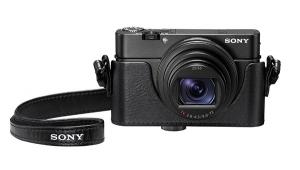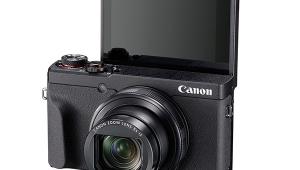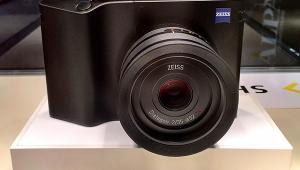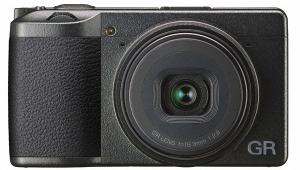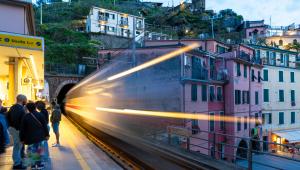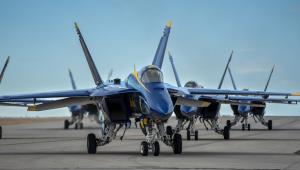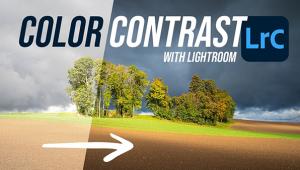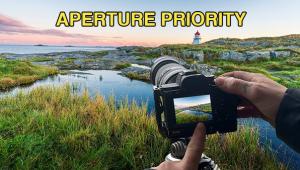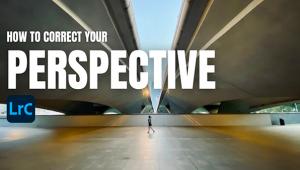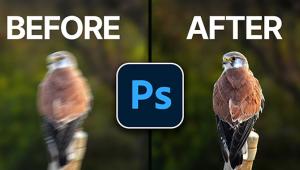Why We Love Modern Retro-Style Cameras

When Nikon announced the full frame Nikon Df, a retro-style digital camera with big metal dials and control rings replacing tiny toggles and surface buttons, it literally took my breath away. Styling aside, here was a camera that could resonate with serious photographers who want to fully control their camera (rather than the other way around).
Like the Olympus Pen, the Panasonic GX8 and the Fujifilm X-T10, the Df’s clean lines, sharp edges and large controls are reminiscent of the finest cameras of film’s glory days in the 1980s and 1990s. They are part of the “retro style” trend that, in the words of the inimitable Yogi Berra, is “déjà vu all over again.”

So what exactly is “retro style” and is it just a marketing gimmick or does it offer anything important for photographers?
A Touch of Style
In the face of the almost daily rollout of new cameras—each with bigger sensors, better video, and faster processing—some photographers are feeling future fatigue and this is where retro begins to find its niche. Retro is about nostalgia, whether in camera design, clothing or in vinyl LP revival. It is about a future wrapped in familiar echoes of the past.
 Retro cameras remind us of old family cameras or perhaps that first camera that launches our love affair with photography. For younger photographers the retro trend is a way to connect with the roots of photography, to what can be seen as a more “authentic” photography.
Retro cameras remind us of old family cameras or perhaps that first camera that launches our love affair with photography. For younger photographers the retro trend is a way to connect with the roots of photography, to what can be seen as a more “authentic” photography.
The Olympus OM-D is a good example of retro design in a contemporary camera. The OM-D has the same square lines and pentaprism housing as the very popular OM reflex cameras that Olympus produced 35 years ago. But design aside, the OM-D functions like a modern digital.
A Sign of Skill
The design and shape of digital cameras evolved out of the autofocus SLRs of the 1990s. Comparing the 1996 Nikon F5 to the 1999 2.7 MP Nikon model D1 it is easy to see the source of the D1’s rounded edges, top deck display and abstract buttons. Over time as automation increased, controls disappeared from bodies and lenses until some cameras had only small dials that set the camera to AUTO or not to AUTO.
These completely automated cameras tend to offend those who self-identify as a photographer. For many of us, when a camera is set to AUTO the shooter simply functions as a tripod.

The retro camera is an antidote to all this. Its distinctive style with large dials and lens control rings quickly identify its owner as a serious photographer; a photographer who knows the craft. They speak to the competence of the photographer and his or her understanding of light, exposure and all the other knowledge that makes up photography.
Physical Connections
For the first 150 years of its existence photography was an extremely physical hand/eye skill. Shooting involved the eye for framing the image while the hand focused the lens and set exposure controls. There was a tactile link with the camera. You could feel the SLR mirror slap, you could hear the shutter whirr and you could sense the film moving as you advanced or rewound it.
One of my teachers felt so strongly about this physical aspect of photography that she assigned us to spend an hour each evening playing with the controls of our cameras. It was her version of five-finger piano exercises.

Retro cameras, with their big control knobs and rings, are more comfortable for me than cameras with flat surface buttons and touch screens. And there is nothing quite as reassuring as precise dial clicks and indented stops that are less likely to accidentally be changed than surface buttons.
Romancing the Frame
Retro is romantic, and like a good romance it’s about finding one’s identity and passion. Like the vinyl LP revival fueled by “millennials” born after the supposed death of LPs, it rejects the one-size-fits-all automation of the digital era. It is perhaps the reason why old twin lens cameras, old rangefinders and the occasional Speed Graphic often turn up in high fashion ads for perfume and clothing aimed at young consumers.

There are two types of retro cameras; retro reflex and retro rangefinder. Reflex cameras include the Olympus OM-D EM-10, Pentax K-1, the Fujifilm X-T10 and the Nikon Df. The rangefinders include the Fujifilm X30, X70, X100 and X-Pro2, the Panasonic GX8, the Olympus Pen F and of course the Leica M-D (typ262).
A minimalist’s dream, the M-D looks and functions like a traditional M-Series film camera. Aperture, shutter speed and focus controls are set by hand, and going a step further the M-D does away with a rear LCD display. Leica describes the $6000 (body only) TYP262 as a camera for the “pure photographer looking to enjoy Leica’s dedication to its heritage.”
Control, Control, Control
Retro-design cameras generally have large manually controlled dials and rings. Reviewers often talk about sensor sizes or burst rates and are happy to point out the advantages of more conventional cameras over a particular retro model. But in a way this is comparing apples and oranges. Retro cameras are about access to controls and not aimed at the same photographers.
 If your main concern as a photographer is control over your picture taking rather than the refining of images in post processing, then retro cameras are serious tools for you to consider. For example, I have used a Fujifilm X30 for several years and I particularly love its large top-deck exposure compensation dials.
If your main concern as a photographer is control over your picture taking rather than the refining of images in post processing, then retro cameras are serious tools for you to consider. For example, I have used a Fujifilm X30 for several years and I particularly love its large top-deck exposure compensation dials.
No matter how advanced an automated exposure system is, it has no idea what it is seeing. While auto-exposure works in general, it can easily miss the proper exposure in difficult lighting situations. With the Fujifilm X30 or newer X100, I can easily make adjustments to the exposure with my finger on the dial while framing an image in the viewfinder.
Here’s another example: In portraiture it is essential that the subject’s eyes are in sharp focus. In tight portraits at wide apertures, auto-focus systems often miss and focus on a nose. An easy-to-use manual optical focus system like that in the X-Pro2 solves this problem and makes it easy to nail sharp eyes.
 Feeling Connected
Feeling Connected
I am the one making decisions using subtle tweaks based on my experience and guided by my knowledge. That the camera captures the image and little else changes the photographic experience itself. Some photographers say that retro-style cameras give them a feeling of connection (or reconnection) to their images that they don’t experience with automated cameras.
The future of retro-style cameras will naturally depend on the dynamics of the marketplace and consumer demand. But if the latest models are any indication, I look forward to seeing more and more of these stylish, photographer controlled cameras in the future.
- Log in or register to post comments

